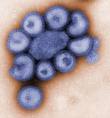
|
NEDERLANDS | ENGLISH
|
|
|
23 November 2009 |
 mail this article
| mail this article
|
 print
| print
|   | DeepJournal | DeepJournal
H1N1 vaccine tested while being administered
Despite promises that the Swine Flu vaccine is safe, it has not been tested on the target demographic that is now receiving the shots in Europe. The testing phase began the moment the drug became available and was administered to the public. It actually has been tested, but only on a small group of healthy people. This was done in a very short period of time. The long-term effects to all parties involved are unknown.
____________________________________________________________________________
DeepJournal Sign up for the free mailing list. |
 But in the event of a pandemic,
But in the event of a pandemic,  can be seen during the testing period as the consequence of old age instead of being seen as effects of the vaccine. For this reason you can't compare the one vaccine for seniors (Fluad) with the other vaccine for younger people (Pandemrix or Focetria).
can be seen during the testing period as the consequence of old age instead of being seen as effects of the vaccine. For this reason you can't compare the one vaccine for seniors (Fluad) with the other vaccine for younger people (Pandemrix or Focetria).